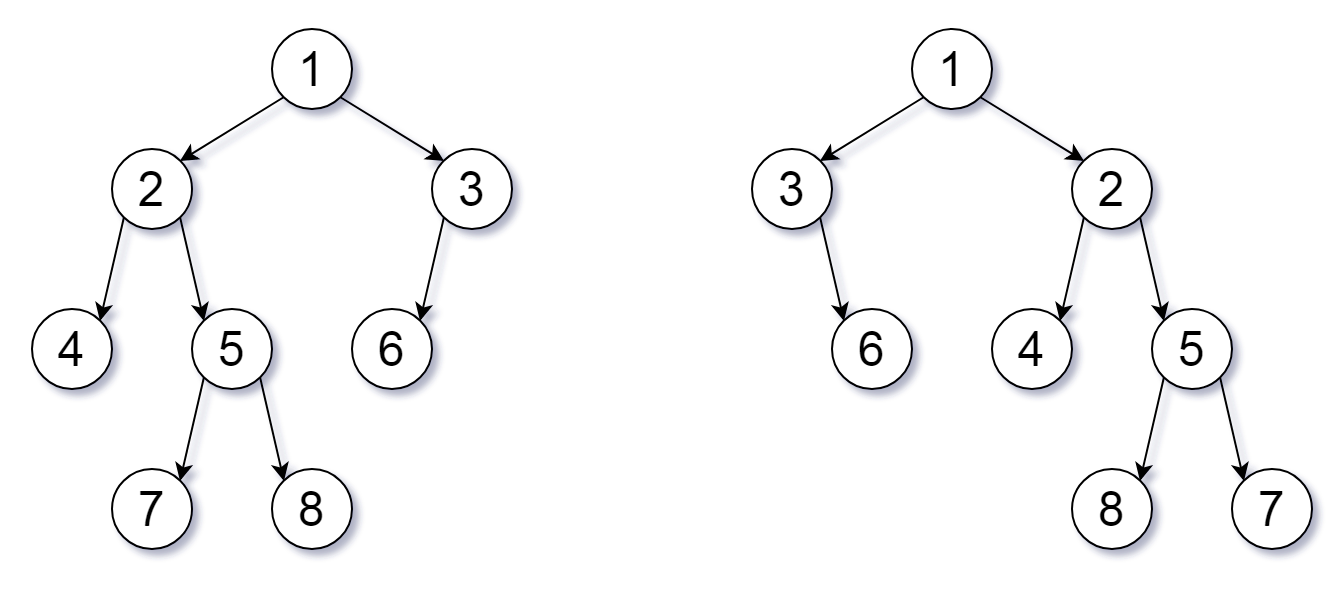For a binary tree T, we can define a flip operation as follows: choose any node, and swap the left and right child subtrees.
A binary tree X is flip equivalent to a binary tree Y if and only if we can make X equal to Y after some number of flip operations.
Given the roots of two binary trees root1 and root2, return true if the two trees are flip equivelent or false otherwise.
Example 1:
Flipped Trees Diagram

1
2
3
| Input: root1 = [1,2,3,4,5,6,null,null,null,7,8], root2 = [1,3,2,null,6,4,5,null,null,null,null,8,7]
Output: true
Explanation: We flipped at nodes with values 1, 3, and 5.
|
Example 2:
1
2
| Input: root1 = [], root2 = []
Output: true
|
Example 3:
1
2
| Input: root1 = [], root2 = [1]
Output: false
|
Example 4:
1
2
| Input: root1 = [0,null,1], root2 = []
Output: false
|
Example 5:
1
2
| Input: root1 = [0,null,1], root2 = [0,1]
Output: true
|
Constraints:
- The number of nodes in each tree is in the range [0, 100].
- Each tree will have unique node values in the range [0, 99].
Solution:
1
2
3
4
5
6
7
8
9
10
11
12
13
14
15
16
17
18
19
20
21
22
23
24
25
26
27
28
29
30
31
32
33
| /**
* Definition for a binary tree node.
* public class TreeNode {
* int val;
* TreeNode left;
* TreeNode right;
* TreeNode() {}
* TreeNode(int val) { this.val = val; }
* TreeNode(int val, TreeNode left, TreeNode right) {
* this.val = val;
* this.left = left;
* this.right = right;
* }
* }
*/
class Solution {
public boolean flipEquiv(TreeNode root1, TreeNode root2) {
if (root1 == null && root2 == null) {
return true;
}
if (root1 != null && root2 == null) {
return false;
}
if (root1 == null && root2 != null) {
return false;
}
if (root1.val != root2.val) {
return false;
}
// 2 eq 3 and 3 eq 2 || 2 eq 2 and 3 eq 3
return (flipEquiv(root1.left, root2.left) && flipEquiv(root1.right, root2.right)) || (flipEquiv(root1.left, root2.right) && flipEquiv(root1.right, root2.left));
}
}
|
